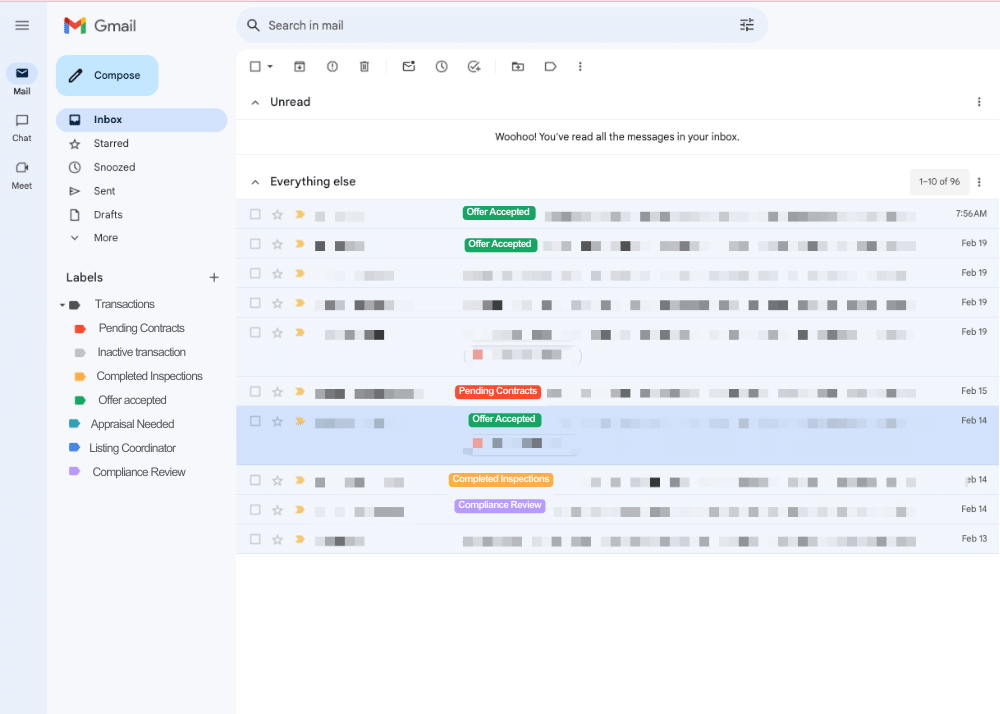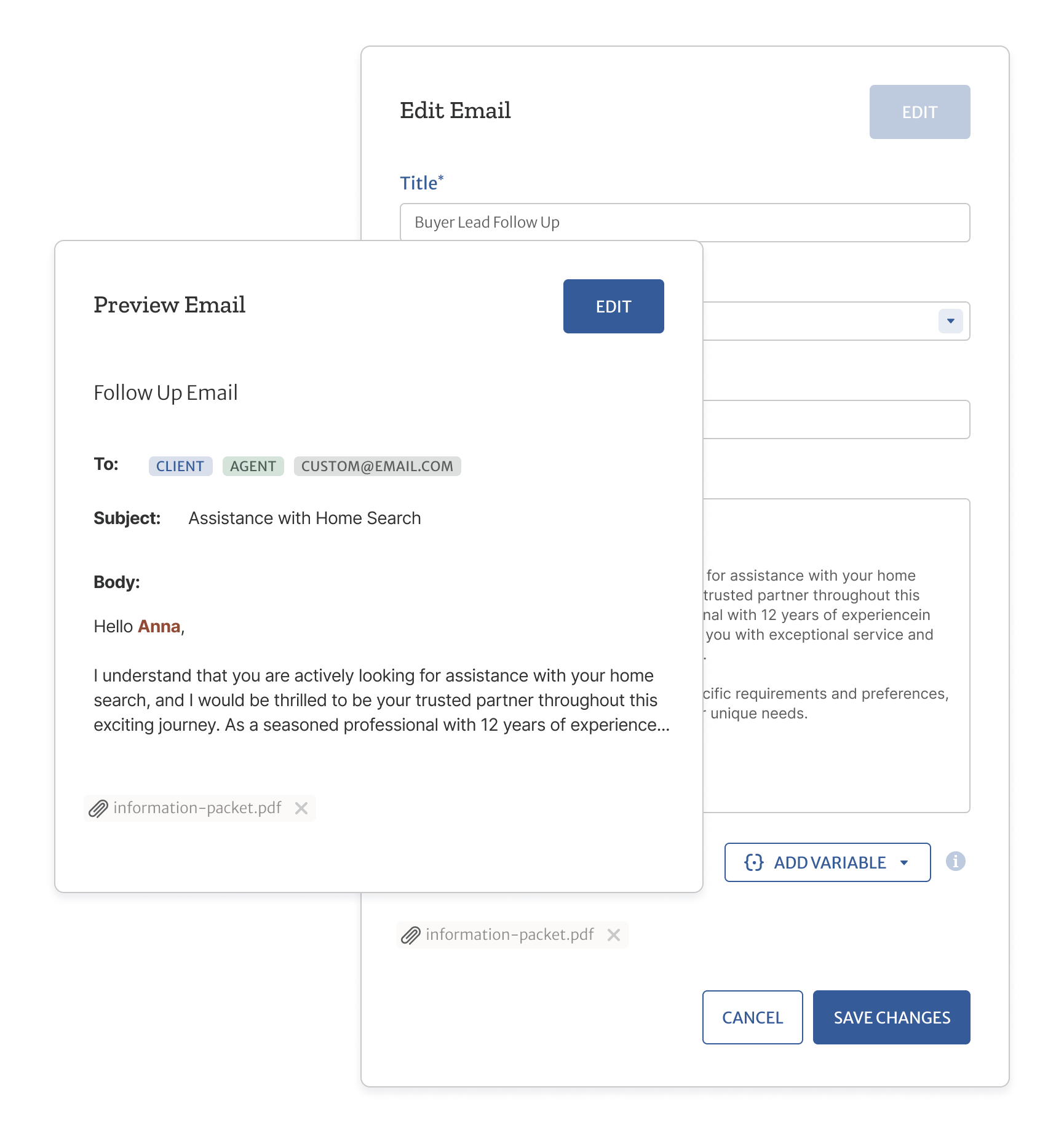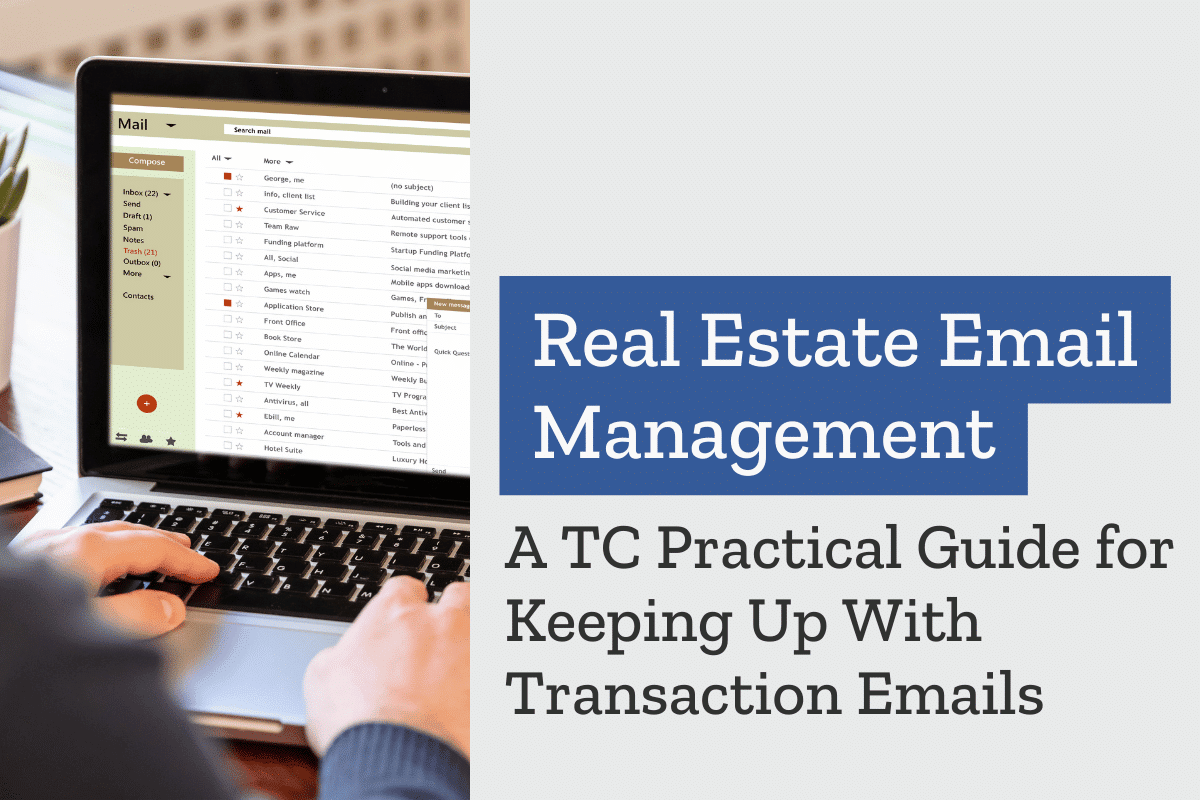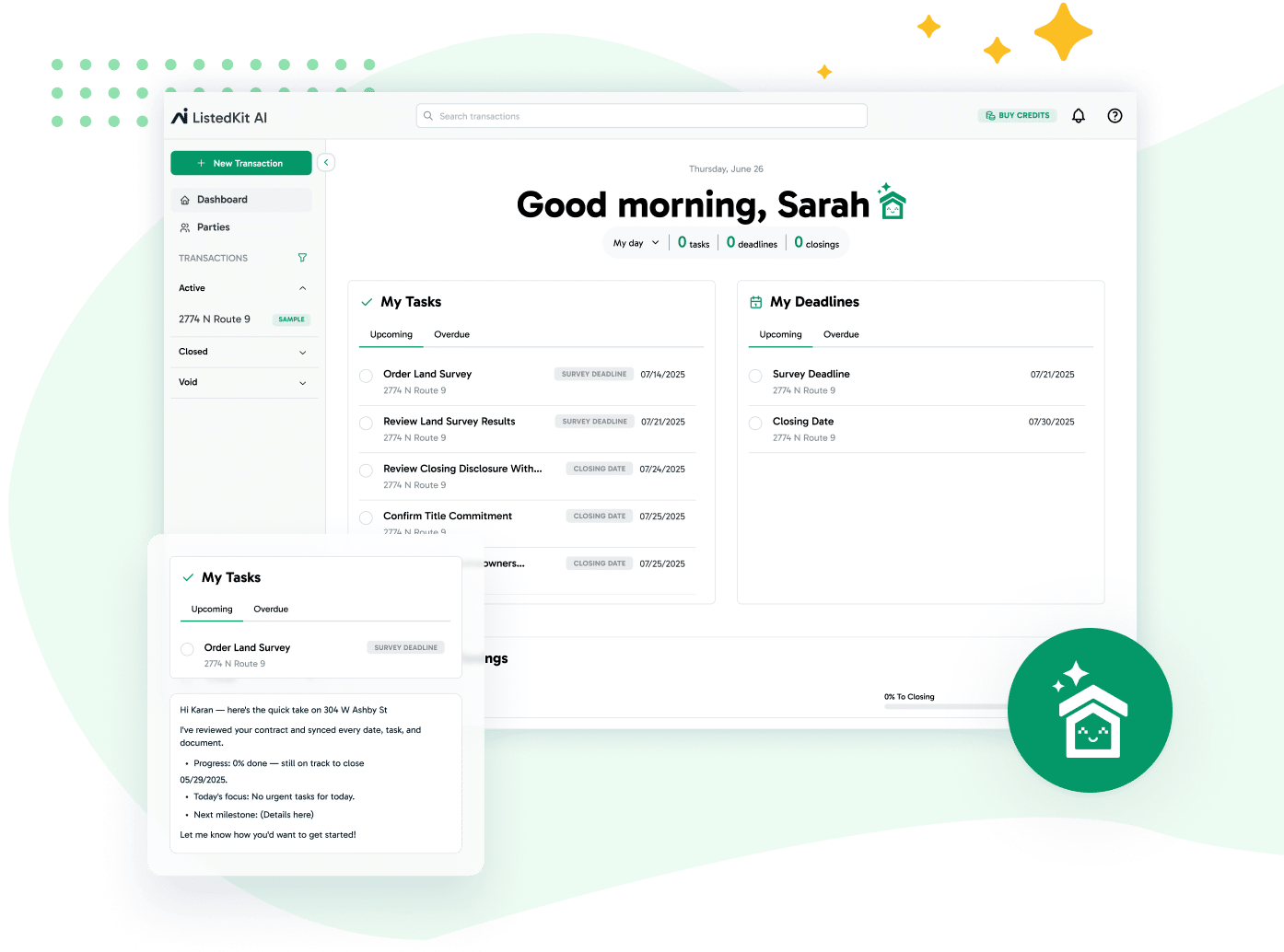As a transaction coordinator (TC) in real estate, managing the flood of emails can be overwhelming. This playbook will help you streamline your email process, ensuring you stay on top of client communications without sacrificing efficiency.
1. Set Up a Robust Email Organization System
- Create folders and subfolders: Organize your inbox by creating folders for each transaction, client, or property. Use subfolders for specific stages of the transaction process.
- Use color-coding and tags: Assign colors to different types of real estate emails (e.g., offers, inspections, closings) for quick visual recognition.
- Implement filters and rules: Set up automatic filters to sort incoming real estate emails into appropriate folders based on sender, subject, or keywords.

2. Prioritize Your Real Estate Emails
- Use the two-minute rule: If an email can be addressed in two minutes or less, handle it immediately. If it can’t, add it to your Listedkit to-do list.
- Create a priority system: Categorize emails as urgent, important, or can wait. Address urgent matters first, followed by important ones.
- Schedule dedicated email time: Allocate specific blocks in your day for checking and responding to real estate emails, rather than constantly monitoring your inbox.
3. Master the Art of Quick Responses
- Leverage auto-responders: Set up automated replies for out-of-office periods or to acknowledge receipt of important documents.
- Develop email templates: Create templates for common real estate email scenarios to save time on repetitive responses.
- Use canned responses: Implement pre-written responses for frequently asked questions about the transaction process. Here are a few examples:



4. Utilize Real Estate Technology
- Implement a task management system: Use tools like ListedKit to convert email action items into tasks, keeping your inbox clutter-free.
- Try email scheduling: Use ListedKit email automation features to schedule emails to be sent at optimal times, ensuring timely communication without constant monitoring.
5. Practice Effective Communication in Real Estate Emails
- Be concise and clear: Keep your emails brief and to the point, addressing only one topic per email when possible.
- Use the property address in the subject line: This trick makes it easier to search and prioritize email threads.
- Implement the “5 Sentences or Less” rule: Aim to keep most of your emails to five sentences or fewer, forcing you to be concise and focused.
6. Collaborate Efficiently with Team Members
- Use shared inboxes: Implement tools that allow multiple team members to access and respond to client emails from a central location.
- Assign email responsibilities: Clearly define which team member is responsible for handling specific types of real estate emails or client inquiries.
- Utilize internal communication tools: Use platforms like Slack or Microsoft Teams for quick internal discussions, reducing the need for lengthy email chains.
7. Leverage AI and Automation for Real Estate Emails
- Implement AI-powered email assistants: Explore tools like X.ai or Clara that can help schedule meetings and manage follow-ups automatically.
- Use smart composition features: Take advantage of AI-powered writing suggestions offered by some email clients to draft responses more quickly.
- Automate routine emails: Use transaction management software like ListedKit to set up automated emails for transaction milestones, reducing the need for manual updates.
8. Regularly Clean Up Your Inbox
- Archive old emails: Move completed transaction emails to an archive folder to keep your main inbox manageable.
- Unsubscribe from unnecessary newsletters: Reduce clutter by unsubscribing from real estate newsletters or updates you no longer need.
- Perform weekly email maintenance: Set aside time each week to delete unnecessary emails and organize your inbox.
9. Educate Clients on Email Best Practices
- Set clear communication expectations: Inform clients about your email response times and preferred methods of communication for urgent matters.
- Provide guidance on email content: Educate clients on what information to include in their emails to facilitate quicker responses and smoother transactions.
- Encourage the use of your organizational system: If you use a client portal or specific email format, guide clients on how to use it effectively.
Closing Thoughts
Managing real estate emails efficiently is a critical skill for transaction coordinators. By implementing these strategies, you’ll streamline your workflow, reduce stress, and provide better service to your clients.
But why stop there? Take your efficiency to the next level with ListedKit. This AI-powered platform is designed specifically for real estate professionals, offering features like automated contract processing, dynamic checklists, and customizable email templates.
ListedKit integrates seamlessly with your existing systems, allowing you to manage tasks across multiple transactions effortlessly. It prioritizes due dates, helping you stay on top of deadlines without constant email monitoring.

Your Real Estate Inbox Partner
Manage ToDos and Autofill Standardized Emails with ListedKit.




